How to Create a Chopped Top for Your Revell 30 Model A
I recently got my hands on an extra Revell 30 Model A kit and decided to take on a new challenge: casting it as a two-part body. In the first kit, I had put the body together and cast it as one piece. This idea came about due to requests for different roof heights, and I realized it would be much more convenient to create separate roof parts and molds instead of working with a single-piece body as I did in the past.
Initially, I attempted to cut, glue, and finish a resin copy, but unfortunately, my efforts were met with limited success. It was clear that I needed to explore an alternative approach. That’s when inspiration struck! I realized that by creating a mold of the bottom of the top section, I could neatly slide in a modified top section while the resin was curing, resulting in a perfect fit.
In this guide, I will walk you through the process I followed to achieve this innovative casting. By adopting this technique, you can create various roof heights effortlessly and achieve precise results. Let’s dive in and explore the steps together.
Part One: Making the Bottom Mold
To begin the process of creating the roof body section, the first step is to make the mold of the bottom. Here is an explanation of how to do this:
Step 1: Leveling the Top Section in a Mold Box
To ensure an accurate mold, it’s crucial to suspend the top section in a mold box in a level position. Legos can be a handy tool for creating the mold box due to their versatility and ease of use. Carefully position the top section within the mold box, making sure it sits level and secure.
Step 2: Mixing and Pouring Silicone
Next, it’s time to prepare the silicone mixture for the mold. Select a suitable silicone material that is specifically designed for mold making. Follow the instructions provided by the manufacturer to mix the silicone components thoroughly. Once the silicone mixture is ready, pour it into the mold box, ensuring that it covers the bottom of the rear window of the top section. Take care not to overfill the mold box; the silicone should come just above the start of the rear window area.
Step 3: Allowing the Silicone to Cure
After pouring the silicone into the mold box, it’s essential to let it cure according to the manufacturer’s instructions. The curing process may involve a specific duration or specific environmental conditions, such as temperature and humidity. Allow sufficient time for the silicone to cure completely, ensuring that it becomes firm and solid.
This bottom mold will serve as the foundation for the subsequent steps in creating the new roof section. Once the silicone has fully cured, you will be ready to move on to the next part of the process.
Part Two: Getting the Part Out
Once the silicone mold has fully cured and set up, it’s time to proceed with removing the top section from the mold. Here’s a step-by-step explanation of this process:
Step 2: Minor Cleanup of the Mold
After removing the top section, you may notice some minor imperfections or excess silicone in the mold. These can be addressed with a minor cleanup process. Use a suitable tool, such as a small knife, to carefully trim away any excess silicone or clean up any rough edges on the mold. This step is essential to ensure a clean and precise fit when making the roof section.
By following these steps, you will successfully retrieve the top section from the silicone mold, with minimal issues encountered during the extraction process. Remember to exercise caution and precision during the cleanup phase to achieve optimal results.
Part Three: Casting the Roof
Now that you have the bottom mold ready, it’s time to move on to casting the roof section. The steps to do this are explained in full below:
Step 1: Preparing the Broken Resin Roof
If you have a resin roof that broke while being removed from its original mold, don’t worry. You can still salvage it for this project. Carefully cut the bottom part of the broken resin roof using a suitable tool, such as a hobby knife or scissors. This will create a modified roof section that can fit into the mold.
I made a mold to cast the original roof as a full part, which allowed me the opportunity to attempt multiple times to achieve a usable chopped roof. While it is possible to clean the resin off the original roof, I found it more convenient to start with a new roof for each attempt. Additionally, this let me keep the successful cast roof as a mold master.
Step 2: Pouring Resin into the Mold
Prepare your chosen resin material according to the manufacturer’s instructions. Ensure you have sufficient resin to fill the mold adequately. With the bottom mold securely in place, slowly pour the resin into the mold. Take care not to overfill it, as this could result in excess material spilling out or add to the cleanup of the final product.
Step 3: Sliding the Modified Roof into Place
While the resin is still in its curing phase and not fully solidified, gently slide the modified roof section down into the mold. Ensure it fits snugly and aligns properly with the mold. The resin will continue to cure and bond the modified roof in place, resulting in an exact fit within the mold.
Step 4: Allowing the Resin to Cure Completely
After positioning the modified roof in the mold, allow the resin to cure completely. Follow the recommended curing time specified by the resin manufacturer. This waiting period ensures that the resin solidifies and attains its final shape and strength.
By following these steps, you can effectively cast the roof section using the modified resin piece. The resin will fill the mold, while the modified roof will seamlessly integrate into the curing resin, providing an accurate and fitting result.
Conclusion
After allowing sufficient time for the resin to cure completely, it was time to remove the cast part from the mold and assess its success. Here’s a clearer explanation of the concluding steps:
Step 1: Removing the Cured Resin Part
Gently and carefully remove the cured resin part from the mold. The part should come out relatively easily, allowing you to separate it from the mold without major issues.
Step 2: Cleaning up Excess Resin
During the casting process, it’s possible that some excess resin might have accumulated or overflowed in certain areas. However, since resin doesn’t bond to itself, it can be cleaned up easily. Use appropriate tools such as a hobby knife, sandpaper, or files to carefully remove any excess resin, ensuring a clean and refined appearance.
Step 3: Addressing Air Voids
Upon inspection, you may notice the presence of air voids or bubbles within the resin part. These voids can be resolved by filling them with additional resin and allowing it to cure. Apply a small amount of resin to the voids and let it cure completely. This process will fill the voids and result in a more solid and flawless final product.
Step 4: Initial Cleanup Assessment
After performing the necessary cleanup steps, take a moment to assess the cast part’s overall quality. Despite the initial air voids and minor imperfections, with the appropriate corrections and refinements, the part shows promising potential for success in the project.
With further attention to detail, refinement, and additional resin filling, you can achieve a high-quality finished product that meets your expectations.
In conclusion, although some adjustments are required to address air voids and perform additional cleanup, the cast part has shown promising results. With continued effort and attention, you can ensure that the final outcome meets your desired standards.
Related Products
30 Ford Model A Roof Top
Chopped Height: 0
30 Ford Model A Roof Top
Chopped Height: 1.5
30 Ford Model A Roof Top
Chopped Height: 6.5

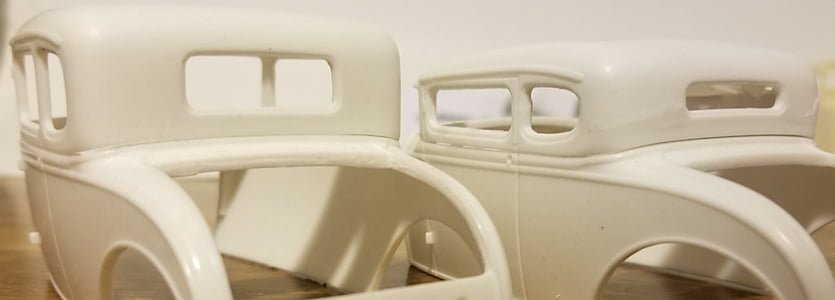
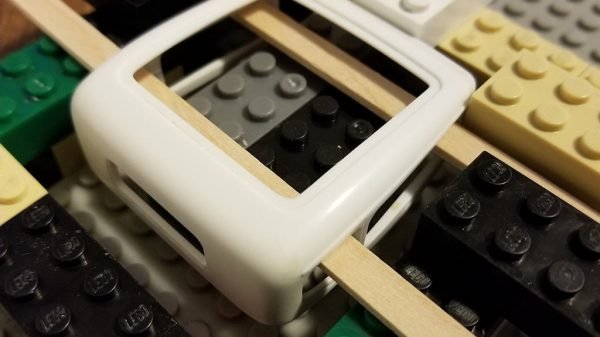
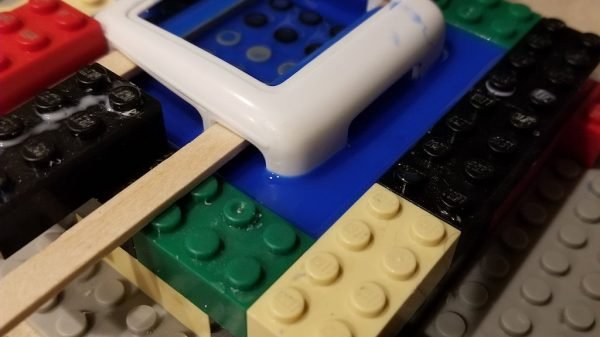
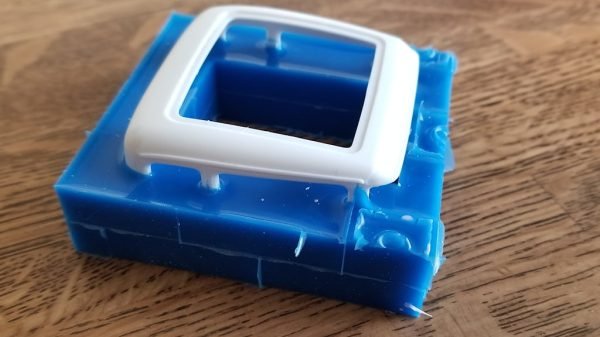
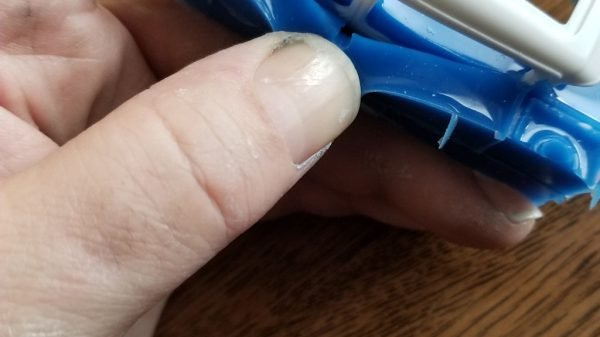

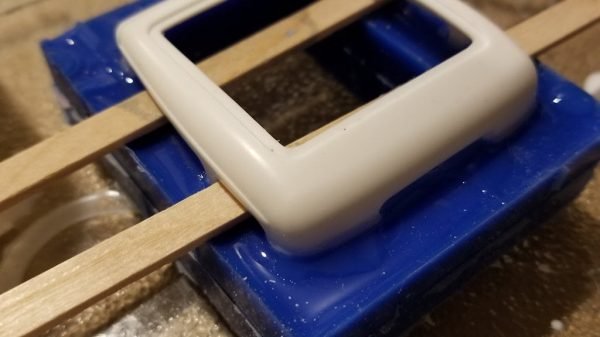


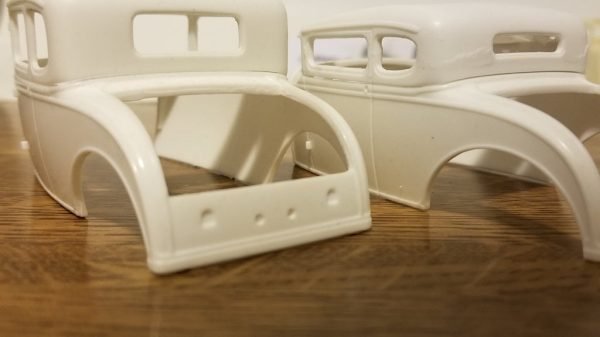


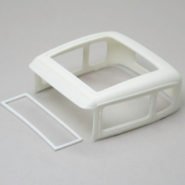

Leave a reply